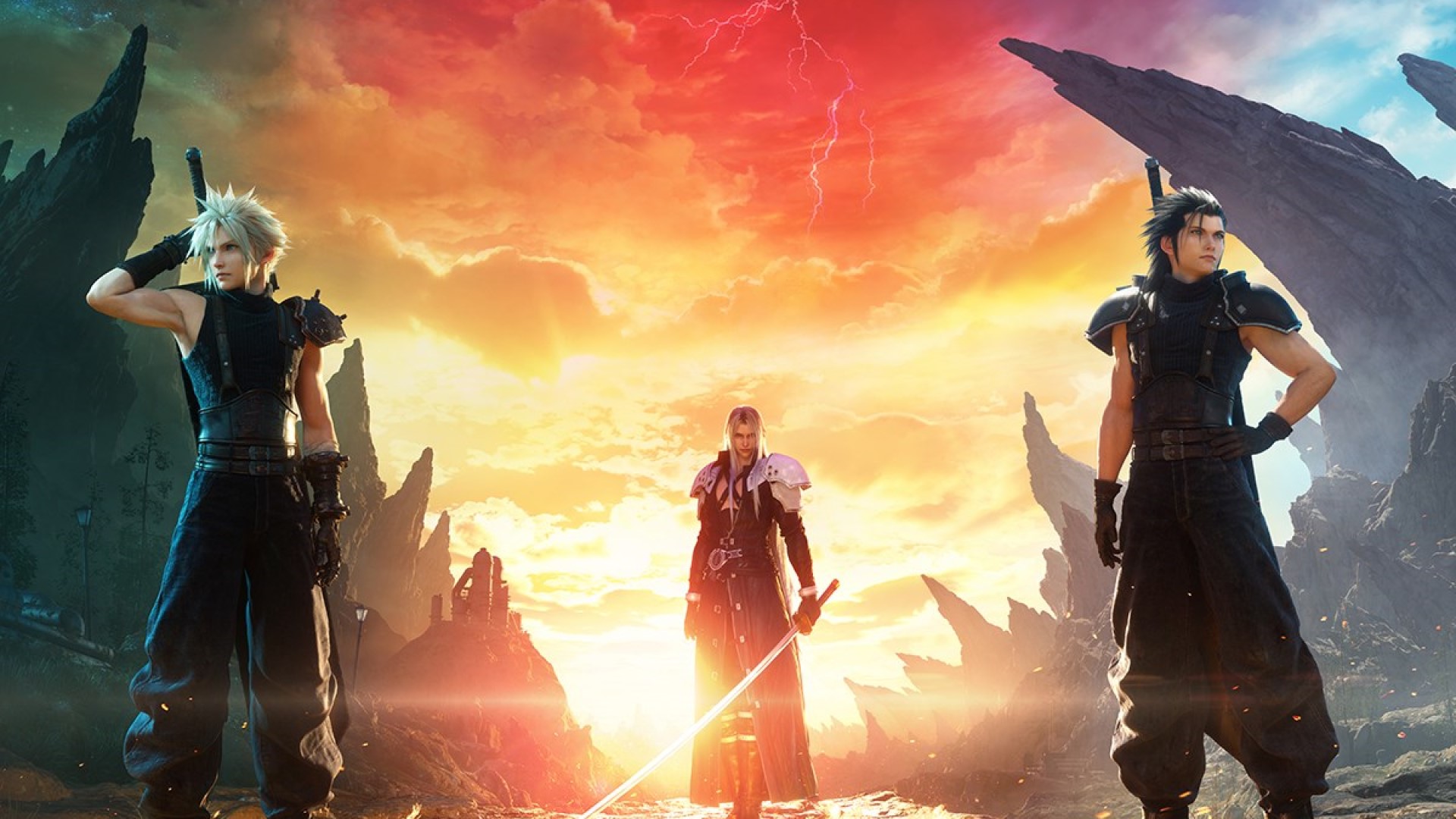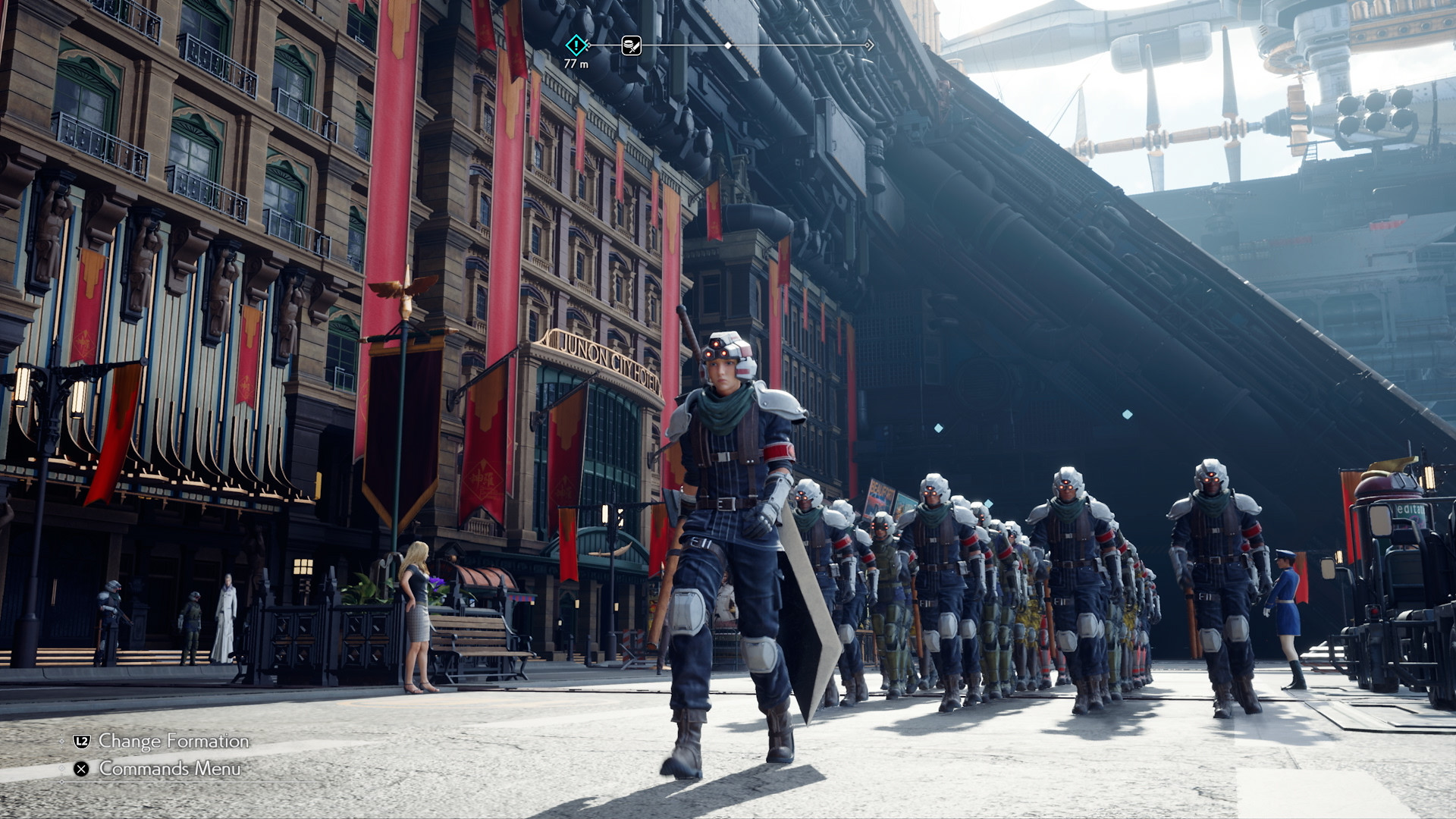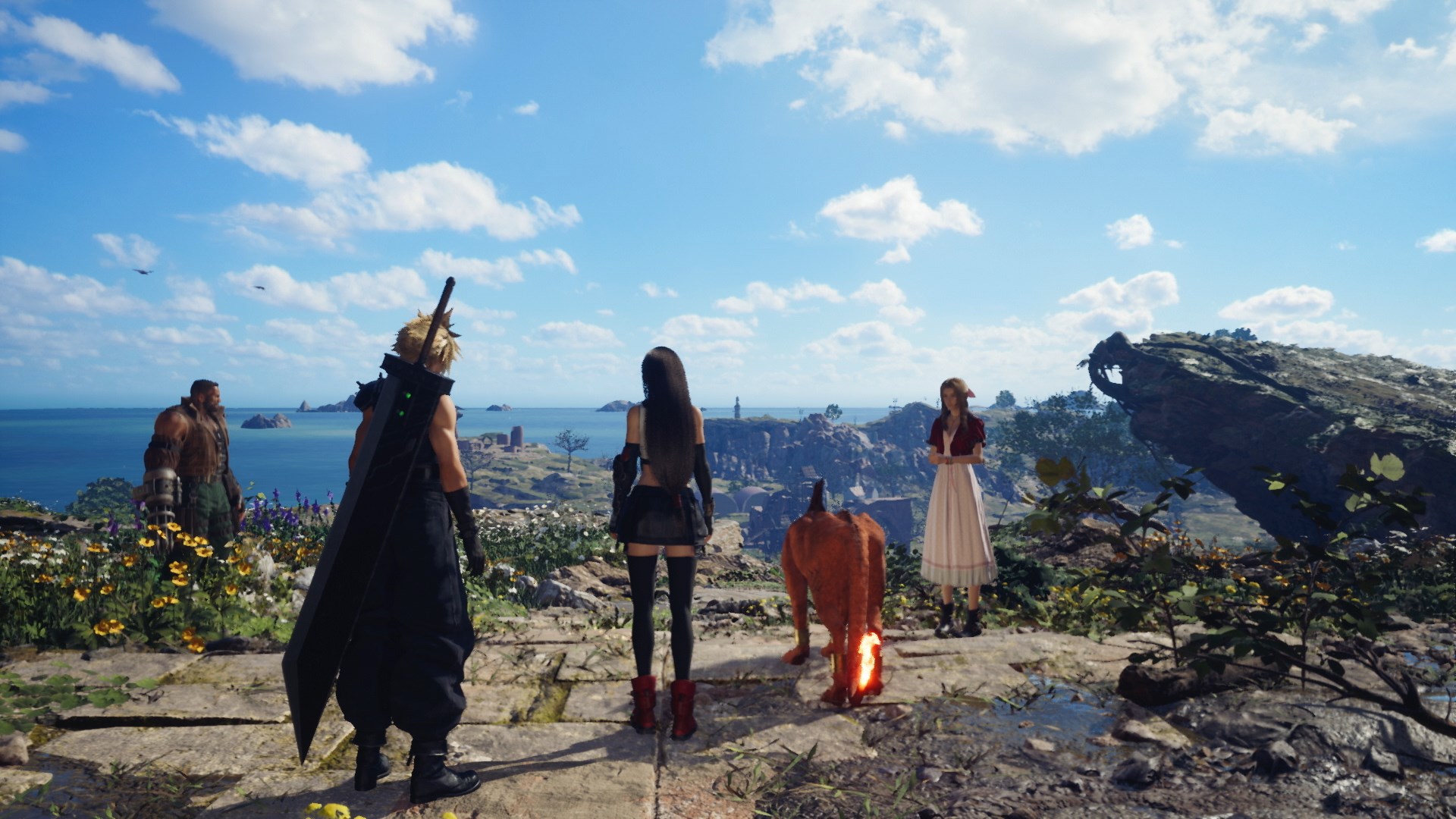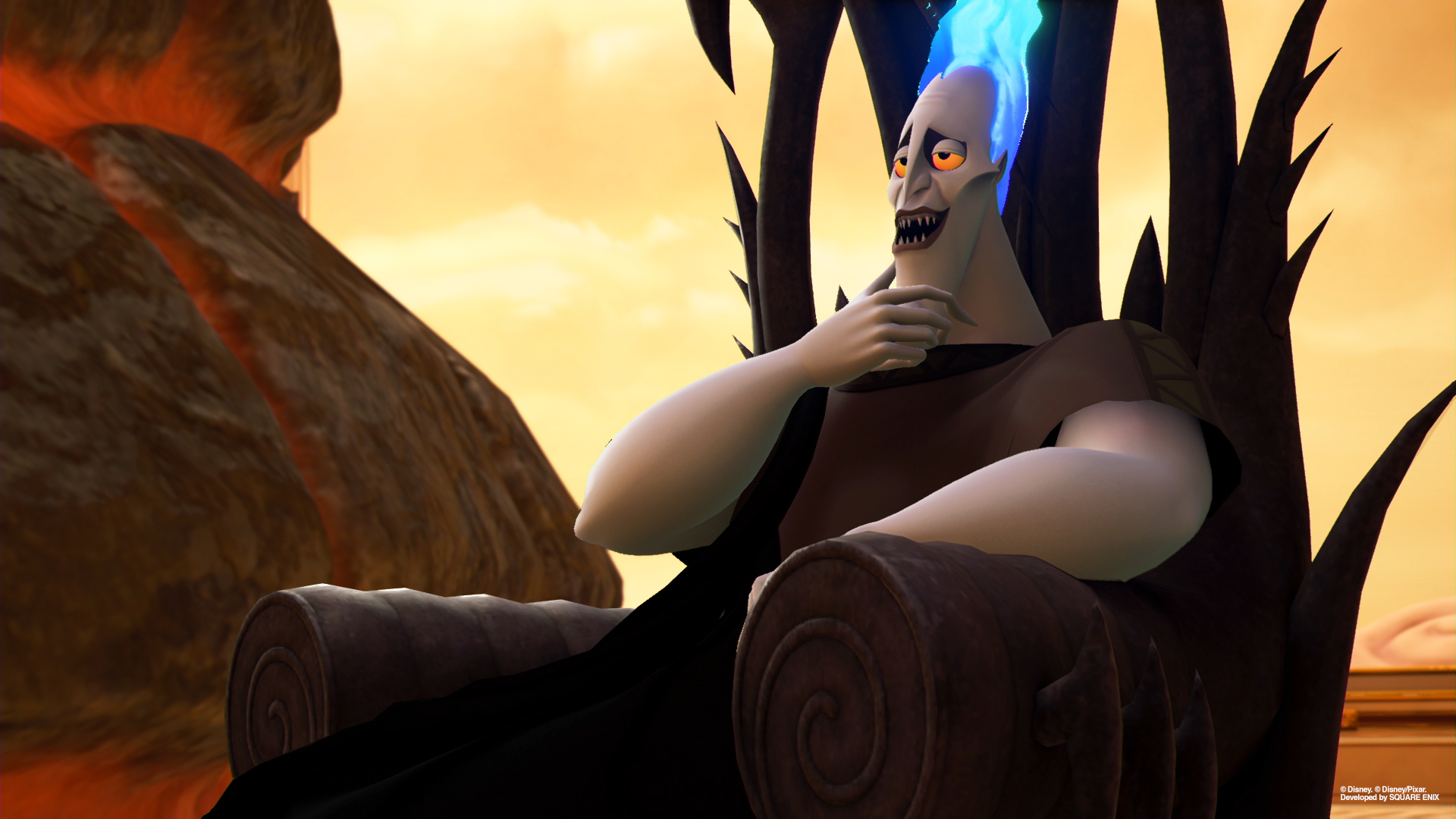
Even a quick glance at Final Fantasy 7 Rebirth's front cover shows that the fantasy role-playing game (RPG) makes plenty of departures from the 1997 classic on which it's based. Standing on the right-hand side, one arm confidently resting at his hips, we see a dead man walking: Zack Fair. Famously killed in the run-up to the original Final Fantasy 7, Zack is alive and kicking in Final Fantasy 7 Rebirth thanks to shenanigans involving alternate timelines and the meddling of supernatural forces.
Spoilers follow for Final Fantasy 7 Rebirth
Now that we’ve arrived at the second part of the Final Fantasy 7 Remake trilogy, developer Square Enix’s cat is out of the bag; there are no guarantees in this retelling of Final Fantasy 7; a fact that Rebirth is keen to hammer home even in its opening chapters. One early set piece has you control Zack on a mission to rescue Aerith, who appears to be in a coma. Both are still stuck in Midgar, the sprawling corporate-run metropolis of the first Remake game - a situation completely at odds with what we understand the plot to be. Rebirth is all about the main characters’ departure from the big city as they set out into the wider world. Square Enix takes our expectations and shatters them.
Meanwhile, we see Cloud, Zack’s protégé, Aerith, and friends make their way out of Midgar to pursue Sephiroth and prevent his plans to ascend to godhood. Though this is the central story of Rebirth, we’re consistently offered glimpses of Zack, who, we eventually discover, appears to be in a different reality - a reality where he survives but Cloud and Aerith are horribly injured.
Towards the end of Rebirth, these stories start to converge as this part of the trilogy begins to deviate more and more strongly from the ‘canon’ events of Final Fantasy 7.
All roads lead to Midgar

This all comes to a head during Rebirth’s closing chapter, where it’s revealed that the story of the remake trilogy takes place across a range of alternate universes. Rather than simply trying to gain control of a single reality, this iteration of Sephiroth wants to control the entire multiverse. He seems to be able to move between these different timelines with ease, visiting Zack in his version of Midgar moments after terrorizing Cloud and pals in the ‘central’ timeline in which the majority of the game takes place.
However, Sephiroth isn’t the only one who has these reality-bending powers. Aerith, a key member of the core ensemble cast, also seems to have these abilities. Back in Remake, she showed plenty of signs that she was aware of the existence of multiple timelines, as well as the possibility of her future death at the hands of Sephiroth.
At the end of Rebirth, Aerith uses these powers to team up with Cloud in a confrontation with Sephiroth, forcing the silver-haired wannabe deity to retreat.
Thanks to Rebirth’s multiverse, every fanfiction permutation of anything Final Fantasy 7 is simultaneously true
This ambitious, if convoluted, move for the Remake trilogy is likely to annoy purists. However, by taking this more ‘meta’ approach, Final Fantasy 7 Rebirth is opening doors and stepping into fresh territory. By acknowledging and accommodating the existence of different timelines and ‘canons’, Rebirth is expanding Final Fantasy 7, helping it grow beyond a self-contained story into something more organic and malleable.
With their reality hopping, Aerith, Zack, Cloud, and Sephiroth have begun to act less like mere characters in a single story and more like mythological figures who exist beyond the boundaries of any one given narrative. Rebirth allows these characters to spread their wings, becoming a series of feelings and themes more than they are products of linear stories. Thanks to Rebirth’s multiverse, every fanfiction and possible playthrough or permutation of anything Final Fantasy 7 is simultaneously true. It’s a huge gift to the fandom and helps affirm how Rebirth’s characters and stories mean different things to different people.
Keys to the kingdom

If you’re a little lost, don’t worry; we’ve seen this before from Square Enix. The Kingdom Hearts series is full of this sort of fan fiction-adjacent storytelling. A sprawling series that features characters from beloved Disney properties and Final Fantasy, Kingdom Hearts also possesses this mythological element. The storytelling is far less concerned with linear ideas of cause and effect and much more devoted to the themes and feelings that underpin its characters.
When James Woods’ iconic Hades from Disney’s Aladdin turns up in Kingdom Hearts 2, questions about how he got there and why he’s talking to Auron from Final Fantasy 10 go out the window. Instead, you’re enjoying some top-tier, hammy villainy. You’re there for how it feels, not for a tight-knit feeling of internal consistency.

This is a quality that’s fundamental to what literary types call the “transformative work”, a quality possessed by both myths and fan fiction according to Associate Professor Tony Keen from the University of Notre Dame. As the name implies, a ‘transformative work’ is a piece of fiction that alters the body on which it is based. In this way, Final Fantasy 7 Rebirth is a transformative work of its own, building on the original Final Fantasy 7 and making it more than the sum of its parts.
For those skeptical of this sort of talk, I urge you to give Rebirth a go
Cloud, Sephiroth, Aerith, and Zack are as much collections of tropes, themes, and feelings as they are individual characters. In Rebirth, Sephiroth is somehow both a military veteran whose sanity shatters after an existential crisis as well as a forty-foot-tall supernatural abomination with two heads, giant wings, and a weird egg-stomach-thing. These may seem like wildly different incarnations, but, in both states, he’s an embodiment of fear, uncertainty, and the unknown.
When you start to see Final Fantasy 7 Rebirth as a collection of mythological themes, tropes, and ideas, you’ll start to see it for what it really is: a brave, transformative story that pokes and challenges its source material. For those skeptical of this sort of talk, I urge you to give it a go. Rebirth will help you see your favorite characters in new lights and new situations. It’s not a carbon copy of Final Fantasy 7, but it’s the differences that make the RPG worth playing.
Final Fantasy 7 Rebirth is one of the best RPGs and best single-player games of the year so far.







